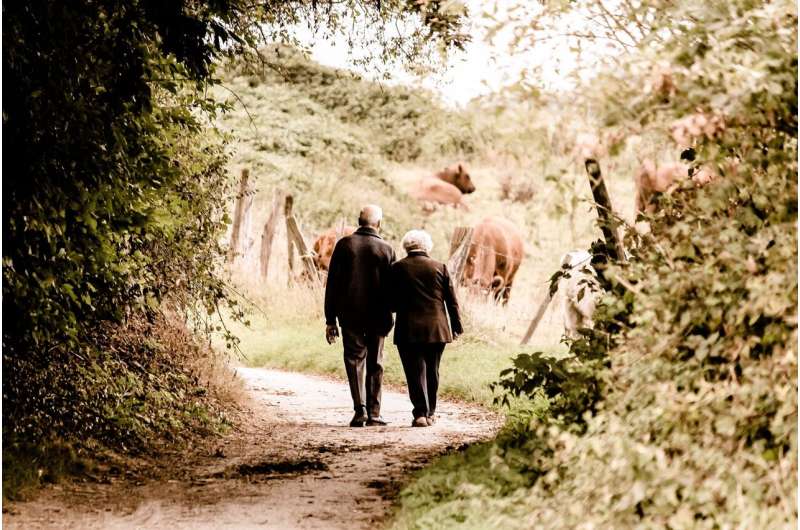Early testing could make risky falls a thing of the past for elderly people


As we get older, our bodies stop performing as they once did. We aren’t as strong as we once were, we don’t see as well as we used to and we start becoming less mobile. These changes inevitably lead to almost one‑third of people over the age of 65 falling each year, resulting in injuries and occasionally death.
In the United States alone, it costs the health care system billions of dollars annually. However, while aging is a certainty, falling may be preventable.
“One big challenge is that small balance impairments can go unnoticed until someone actually falls. So, we wanted to ask: Can we detect these impairments before someone gets hurt?” explains Jiaen Wu of Stanford University, U.S.
Wu partnered with Michael Raitor, Guan Tan, Kristan Staudenmayer, Scott Delp, Karen Liu and Steven Collins, also of Stanford University, to investigate this question. They published their discovery in the Journal of Experimental Biology that keeping track of the tiny details of the way someone walks throughout their adult life could identify whether they are at risk of having a life‑threatening fall in the future.
To begin to answer this question, the team fitted 10 healthy volunteers between the ages of 24 and 31 with a harness around their waist attached in the front, back and sides to ropes and markers that would allow an array of 11 cameras to track the movement of various body parts as they walked comfortably on a treadmill at 1.25 ms-1.
The researchers measured various aspects of the participants’ walking, such as how predictable their foot placement was and how far their center of mass moved sideways.
Then Wu and colleagues measured the walkers again, but this time they were asked to wear ankle braces, an eye-blocking mask or pneumatic jets, all of which encumbered their walking, similar to the changes that accompany aging.
This time, it became more difficult to predict how wide each step would be—or even when the next step would take place—while the walkers were wearing their impediments, suggesting that making their surroundings more difficult to see or making it more difficult to move their limbs properly threw off their balance.
When the scientists compared each person’s measurements from their normal walking to their hampered walking, not all the metrics were good at predicting balance issues.
In fact, only three of the six measurements made before the impairments were any good at foretelling if someone was at risk for a fall: how different the width of each step was, how different the timing of each step was and where they placed their feet. Each of these three measurements were over 86% effective at predicting balance issues.
In addition, Wu and colleagues also unexpectedly pulled on the ropes attached to the walker’s harness to see how they recovered from the sudden loss of balance.
Surprisingly, adding this small amount of recovery information to the information they had already collected for each volunteer didn’t really help predict a fall risk as much as the team expected.
“We thought that seeing how people recover from a pull would reveal more about their balance ability, but in this study, the normal walking data was just as informative in most cases,” says Wu.
When the researchers compared each person’s walking to the average of the whole group, they found that the group average was worse at predicting if an individual person would have balance issues than comparing each person to themselves before and after they were impaired. Normally, doctors only test how someone walks when they start having mobility issues.
Wu and colleagues suggest that measuring someone’s walking before they attain old age could give clinicians an early warning, hopefully preventing falls before they happen, potentially saving health care systems billions and saving lives as well.
More information:
Wu, J., et al. Detecting artificially impaired balance: metrics, perturbation effects and detection thresholds, Journal of Experimental Biology (2025). DOI: 10.1242/jeb.249339
Citation:
Early testing could make risky falls a thing of the past for elderly people (2025, May 22)
retrieved 22 May 2025
from https://medicalxpress.com/news/2025-05-early-risky-falls-elderly-people.html
This document is subject to copyright. Apart from any fair dealing for the purpose of private study or research, no
part may be reproduced without the written permission. The content is provided for information purposes only.
If you liked the article, do not forget to share it with your friends. Follow us on Google News too, click on the star and choose us from your favorites.
If you want to read more Like this articles, you can visit our Science category.



